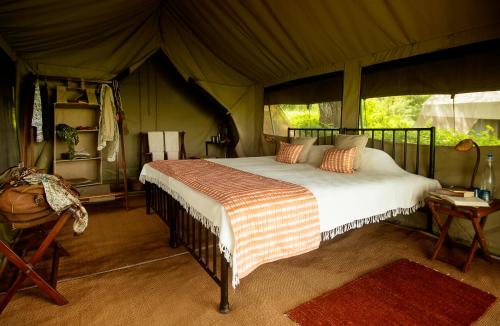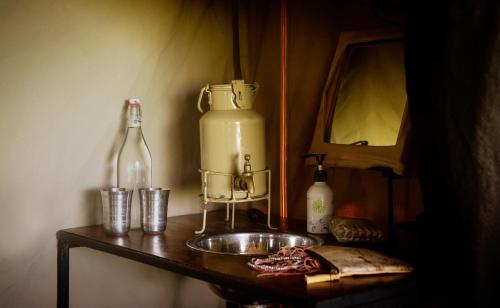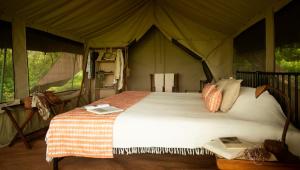운영업체 정보
Entara was founded by a diverse group of artists, safari guides, hoteliers, chefs, and entrepreneurs who share a deep passion for Africa’s wilderness and its people. Through years of hands-on safari operations, we've learned that the true essence of safari lies in the raw connection to wildlife and wilderness, not in fancy décor or sealed rooms. Our team strives to evoke a sense of adventure, wonder, and genuine connection through shared experiences and new friendships.
Despite our varied backgrounds, the Entara team is a close-knit family united by friendship, solidarity, and a shared purpose with both colleagues and guests. Our collection of five intimate lodges and camps are carefully nestled within Africa’s natural wonders, offering comfort and service without compromising on the authentic safari experience.
Katambuga House in Arusha, with its lush gardens and tranquil pool, serves as an oasis of tropical serenity. Olmara Camp, situated in the remote Ngare Nayuki River Valley, is a dream location for wildlife photography enthusiasts, featuring luxury tented suites blending seamlessly into acacia groves, grasslands, and rocky outcrops.
Kisima Ngeda Camp, nestled among fever tree forests, provides a wilderness adventure with the option of an overnight fly camp on Lake Eyasi’s eastern shore for an unforgettable night under the stars. Esirai Camp moves alongside wildebeest herds during their epic 600km migration across the plains, offering an unparalleled African safari adventure.
Lastly, Olkeri Camp, known for its vast elephant herds, offers expansive views of woodlands and rocky hills, shaded by ancient Baobab and Acacia trees, allowing guests the freedom to explore day and night.
숙소 정보
Esirai camp moves with the great migratory herds of Wildebeest that cross the Serengeti in what is known as Nature’s Greatest Show on Earth. This intimate traveling camp enables you to experience being a part of this 600-kilometre journey as the Wildebeest, Zebra and their Antelope companions walk their time-honoured grazing routes from the Southern plains to the North for the Mara River crossing.
With only eight tents, this camp has a light ecological footprint and uses solar power and other eco-friendly practices. Yet it still offers comfort: attentive service, great local food and a privileged place from which to witness one of Nature’s wonders. Days in the camp draw to a close with a sundowner and a hearty dinner made by your private chef. Stories are shared around the campfire before retiring to your tent to a unique lullaby of roaring lions.
We locate the camp in the best-secluded vantage points, determined by seasonal weather changes and the position of the herds. During the rainy season, the herds calve in the Southern grass plains to build strength but slowly move northward in May, following a few routes. Then, they begin the long trek back South at the end of the year.
주변 숙소
NORTHERN SERENGETI: An area of great scenic beauty, the northern Serengeti is a vast area of lush rolling hills covered in thick vegetation, cut by meandering river valleys and interspersed with grassy plains. From July to October, herds of Wildebeest and Zebra fill the northern Serengeti where they brave the hostile water of the Mara River in search of greener grass on the opposite bank.
The region is vast and suited for the adventurous and those preferring a safari off the beaten track. It is ideal for Wildlife Photographers following the Migration that attracts not only the Wildebeest and Zebra but also predators.
Perennial rivers and springs support large populations of resident wildlife and walking safaris are on offer for explorers to traverse the wilderness zones; or hot air ballooning that lifts from the Banks of the Mara River and drifts over the migrating herd.
SOUTHERN SERENGETI The grassy plains, studded with granite outcrops extend endlessly across to the horizon and serve as a nursery to herds that will make the great journey north. From December to May each year, herds of wildebeest, zebra and gazelle arrive to calve. By February, the young take their first steps on the savanna and also risk become prey to Lion and Cheetah.
This area is superb between December and May. After the rain, it transforms into a natural Eden of flowering meadows and grasses. From June, as water sources are reduced to dusty flats and the grasses die off, the wildlife moves northward in search of greener pastures.













